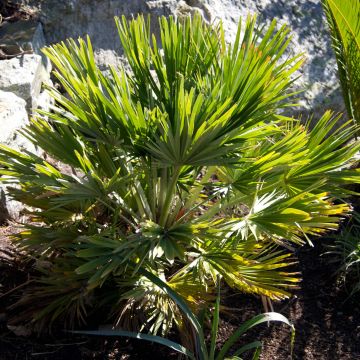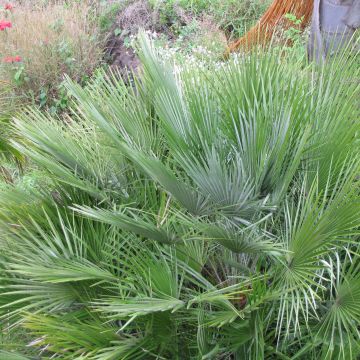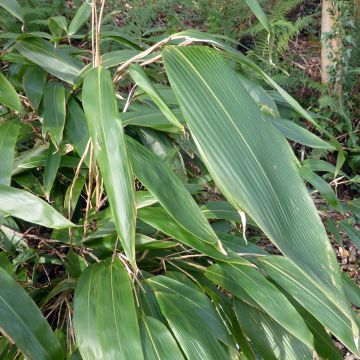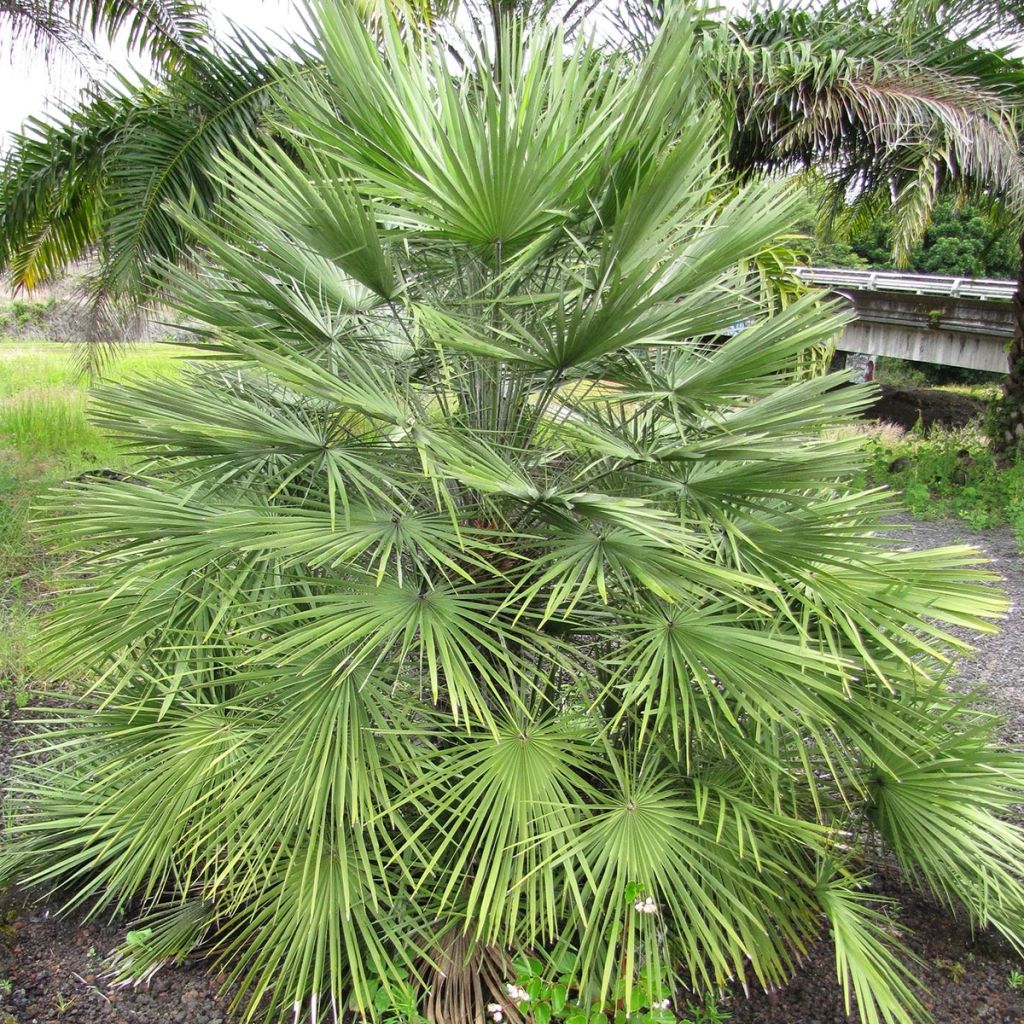

Chamaerops humilis - Dwarf Palm


Chamaerops humilis - Dwarf Palm
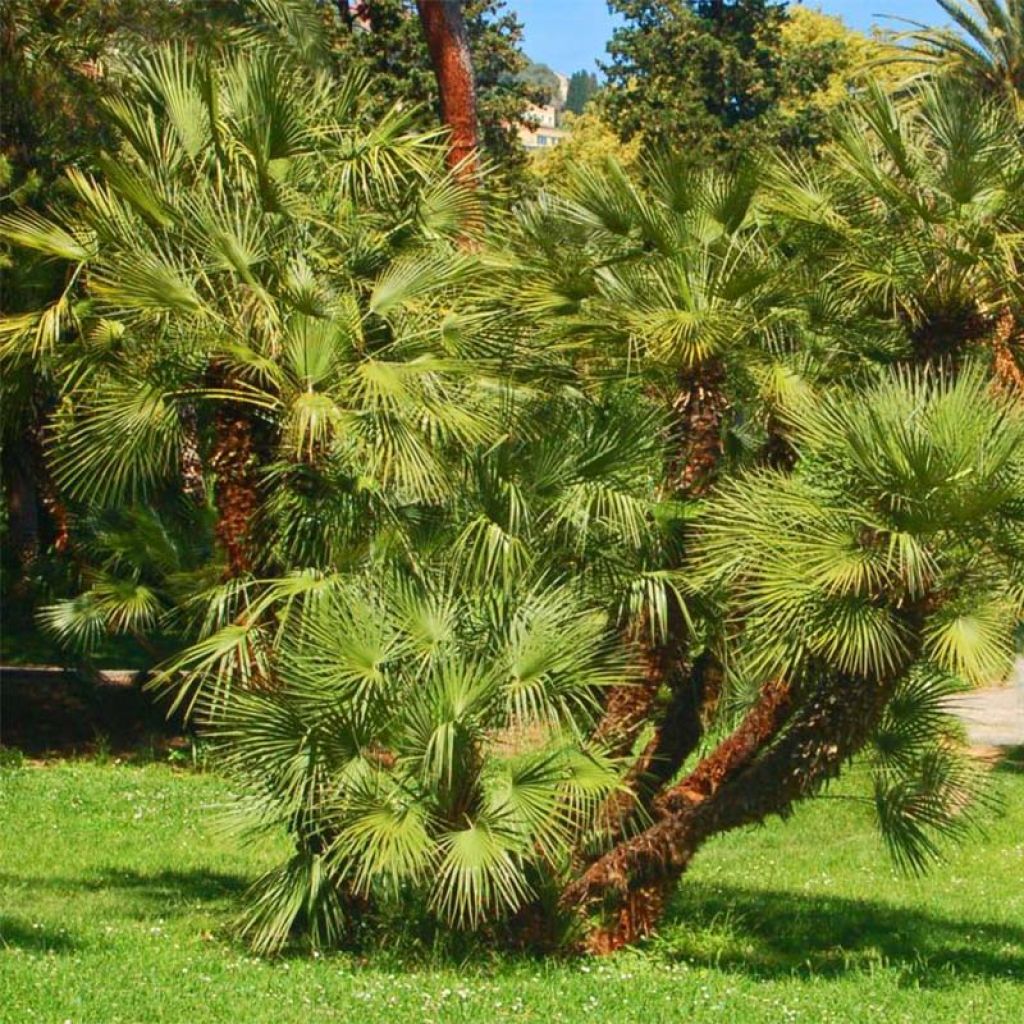

Chamaerops humilis - Dwarf Palm


Chamaerops humilis - Dwarf Palm


Chamaerops humilis - Dwarf Palm


Chamaerops humilis - Dwarf Palm


Chamaerops humilis - Dwarf Palm


Chamaerops humilis - Dwarf Palm
Chamaerops humilis - Dwarf Palm
Chamaerops humilis
Dwarf fan palm
This item cannot be shipped to the selected country
Delivery charge from €5.90
Delivery charge from €5.90
Delivery charge from €5.90
Delivery charge from €5.90
More information
Schedule delivery date,
and select date in basket
This plant carries a 24 months recovery warranty
More information
We guarantee the quality of our plants for a full growing cycle, and will replace at our expense any plant that fails to recover under normal climatic and planting conditions.
From €5.90 for pickup delivery and €6.90 for home delivery
Express home delivery from €8.90.
From €5.90 for pickup delivery and €6.90 for home delivery
Express home delivery from €8.90.
From €5.90 for pickup delivery and €6.90 for home delivery
Express home delivery from €8.90.
From €5.90 for pickup delivery and €6.90 for home delivery
Express home delivery from €8.90.


Does this plant fit my garden?
Set up your Plantfit profile →
Description
Chamaerops humilis, also known as the Dwarf Palm or Mediterranean Palm, is the only palm tree native to Europe, specifically the Mediterranean coast, on limestone soil and rather dry. It has a compact habit, in tufts, particularly suitable for cultivation in large pots as well as gardens where space is limited. It develops a trunk covered with fibres from which emerge multiple stems bearing stiff, fan-shaped leaves. While not the most spectacular of all palms, this small palm tree will bring an exotic touch to any decor, while being one of the easiest to grow. It is a drought-resistant and salt-tolerant plant that withstands poor soils and thrives in very sunny locations.
A slow-growing shrub of the palm family, highly appreciated as an ornamental plant, the Chamaerops humilis is mainly native to Mediterranean regions. It grows spontaneously in dry habitats, on sandy or rocky soils, by the sea but also at altitude, sometimes enduring snow and rather cold temperatures in winter. In nature, this palm tree's growth is often stunted if grown in poor soil. But in the fertile soil of our gardens, it becomes a giant, with lush vegetation. The plant, referred to as clumping, produces multiple stems on a single plant, forming an upright, squat and spreading bush. Its adult dimensions will not exceed 4 m (13.1 ft) in height and 2 m (6.6 ft) in width, even less if grown in pots. The brown 'trunks' measure 25 cm (9.8 in) wide on mature specimens, and are covered with layers of fibres and leaf scars. The elegant, highly dissected leaves are composed of small, narrow, stiff, thin segments, 45 cm (17.7 in) long, and radiate from the petiole covered with numerous spines. They are bright green on the upper surface, but white underneath. This plant is generally dioecious (not always), meaning that males and females are usually distinct. The fragrant flowers appear in late spring, in the form of a spadix, surrounded by a spathe 40 cm (15.7 in) long, containing many small beige to yellow flowers, male or female. The fruits, called drupes, are oval-shaped and reddish-brown when ripe, with fibrous flesh. However, the fruit is not edible.
Along with the Trachycarpus fortunei, this dwarf palm is one of the easiest to acclimatise. In the ground, it can be placed in isolation, not far from a swimming pool for example, along with banana trees or yuccas, in an exotic-inspired setting. But this highly drought-resistant variety reveals its full potential in a dry garden or a large rockery. Although it can be tricky to place with other plants, it can nevertheless be planted in groups of 3 plants and surrounded by a carpet of thyme, a sowing of California Poppies, or a bed of Felicia. In a contemporary garden, set it above a tide of white pebbles. It will make a magnificent specimen on a terrace or balcony, planted in a carefully chosen large pot.
Report an error about the product description
Chamaerops humilis - Dwarf Palm in pictures


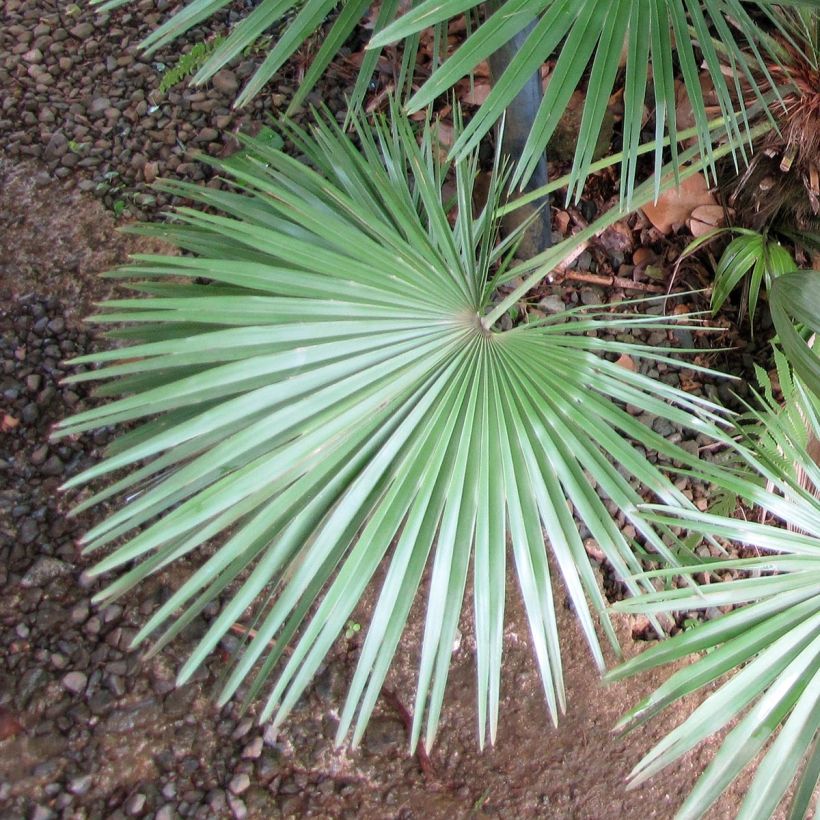





Plant habit
Flowering
Foliage
Botanical data
Chamaerops
humilis
Arecaceae
Dwarf fan palm
Mediterranean
Other Chamaerops
Planting and care
Plant the dwarf palm in light, well-drained soil. It can even tolerate poor, limestone soil, and soil that is dry in summer. The perfect medium is a mixture of coarse sand, gravel, and garden soil, which will effectively drain winter moisture. Install it in a location protected from cold, dry winds. At temperatures of around -12° C to -15° C (10.4° F to 5° F), it will likely lose its leaves, but the crown will reform in spring. Protect the trunk with a winter fleece, and even a thick mulch. Easy to grow, it requires little maintenance other than pruning the oldest fronds close to the trunk.
Planting period
Intended location
Care
-
, onOrder confirmed
Reply from on Promesse de fleurs
Evergreen shrubs
Haven't found what you were looking for?
Hardiness is the lowest winter temperature a plant can endure without suffering serious damage or even dying. However, hardiness is affected by location (a sheltered area, such as a patio), protection (winter cover) and soil type (hardiness is improved by well-drained soil).

Photo Sharing Terms & Conditions
In order to encourage gardeners to interact and share their experiences, Promesse de fleurs offers various media enabling content to be uploaded onto its Site - in particular via the ‘Photo sharing’ module.
The User agrees to refrain from:
- Posting any content that is illegal, prejudicial, insulting, racist, inciteful to hatred, revisionist, contrary to public decency, that infringes on privacy or on the privacy rights of third parties, in particular the publicity rights of persons and goods, intellectual property rights, or the right to privacy.
- Submitting content on behalf of a third party;
- Impersonate the identity of a third party and/or publish any personal information about a third party;
In general, the User undertakes to refrain from any unethical behaviour.
All Content (in particular text, comments, files, images, photos, videos, creative works, etc.), which may be subject to property or intellectual property rights, image or other private rights, shall remain the property of the User, subject to the limited rights granted by the terms of the licence granted by Promesse de fleurs as stated below. Users are at liberty to publish or not to publish such Content on the Site, notably via the ‘Photo Sharing’ facility, and accept that this Content shall be made public and freely accessible, notably on the Internet.
Users further acknowledge, undertake to have ,and guarantee that they hold all necessary rights and permissions to publish such material on the Site, in particular with regard to the legislation in force pertaining to any privacy, property, intellectual property, image, or contractual rights, or rights of any other nature. By publishing such Content on the Site, Users acknowledge accepting full liability as publishers of the Content within the meaning of the law, and grant Promesse de fleurs, free of charge, an inclusive, worldwide licence for the said Content for the entire duration of its publication, including all reproduction, representation, up/downloading, displaying, performing, transmission, and storage rights.
Users also grant permission for their name to be linked to the Content and accept that this link may not always be made available.
By engaging in posting material, Users consent to their Content becoming automatically accessible on the Internet, in particular on other sites and/or blogs and/or web pages of the Promesse de fleurs site, including in particular social pages and the Promesse de fleurs catalogue.
Users may secure the removal of entrusted content free of charge by issuing a simple request via our contact form.
The flowering period indicated on our website applies to countries and regions located in USDA zone 8 (France, the United Kingdom, Ireland, the Netherlands, etc.)
It will vary according to where you live:
- In zones 9 to 10 (Italy, Spain, Greece, etc.), flowering will occur about 2 to 4 weeks earlier.
- In zones 6 to 7 (Germany, Poland, Slovenia, and lower mountainous regions), flowering will be delayed by 2 to 3 weeks.
- In zone 5 (Central Europe, Scandinavia), blooming will be delayed by 3 to 5 weeks.
In temperate climates, pruning of spring-flowering shrubs (forsythia, spireas, etc.) should be done just after flowering.
Pruning of summer-flowering shrubs (Indian Lilac, Perovskia, etc.) can be done in winter or spring.
In cold regions as well as with frost-sensitive plants, avoid pruning too early when severe frosts may still occur.
The planting period indicated on our website applies to countries and regions located in USDA zone 8 (France, United Kingdom, Ireland, Netherlands).
It will vary according to where you live:
- In Mediterranean zones (Marseille, Madrid, Milan, etc.), autumn and winter are the best planting periods.
- In continental zones (Strasbourg, Munich, Vienna, etc.), delay planting by 2 to 3 weeks in spring and bring it forward by 2 to 4 weeks in autumn.
- In mountainous regions (the Alps, Pyrenees, Carpathians, etc.), it is best to plant in late spring (May-June) or late summer (August-September).
The harvesting period indicated on our website applies to countries and regions in USDA zone 8 (France, England, Ireland, the Netherlands).
In colder areas (Scandinavia, Poland, Austria...) fruit and vegetable harvests are likely to be delayed by 3-4 weeks.
In warmer areas (Italy, Spain, Greece, etc.), harvesting will probably take place earlier, depending on weather conditions.
The sowing periods indicated on our website apply to countries and regions within USDA Zone 8 (France, UK, Ireland, Netherlands).
In colder areas (Scandinavia, Poland, Austria...), delay any outdoor sowing by 3-4 weeks, or sow under glass.
In warmer climes (Italy, Spain, Greece, etc.), bring outdoor sowing forward by a few weeks.

































